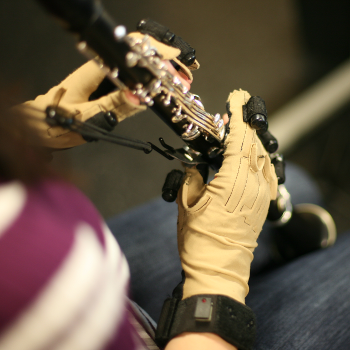
Investigating Finger Motion and Hand Posture during Clarinet Performance
Contact
Members
Finger motion and hand posture of six professional clarinetists were recorded using a pair of CyberGloves®. Performance tasks included performing a slurred three-octave chromatic scale in sixteenth notes, at sixty quarter-note beats per minute, three times, with a metronome and a short pause between repetitions, and forming three pedagogical hand postures. Following the CyberGloves® tasks, each subject completed a questionnaire about equipment, playing history, practice routines, health practices, and hand usage during computer and sports activities. CyberGlove® data were analyzed to find average hand/finger postures and differences for each pitch across subjects, subject variance in the performance task and differences in ascending and descending postures of the chromatic scale. The data were also analyzed to describe generalized finger posture characteristics based on hand size, whether right hand thumb position affects finger flexion, and whether professional clarinetists use similar finger/hand postures when performing on clarinet, holding a tennis ball, allowing hands to hang freely by the sides, or form a “C” shape. The findings of this study suggest an individual approach based on hand size is necessary for teaching clarinet hand posture.




